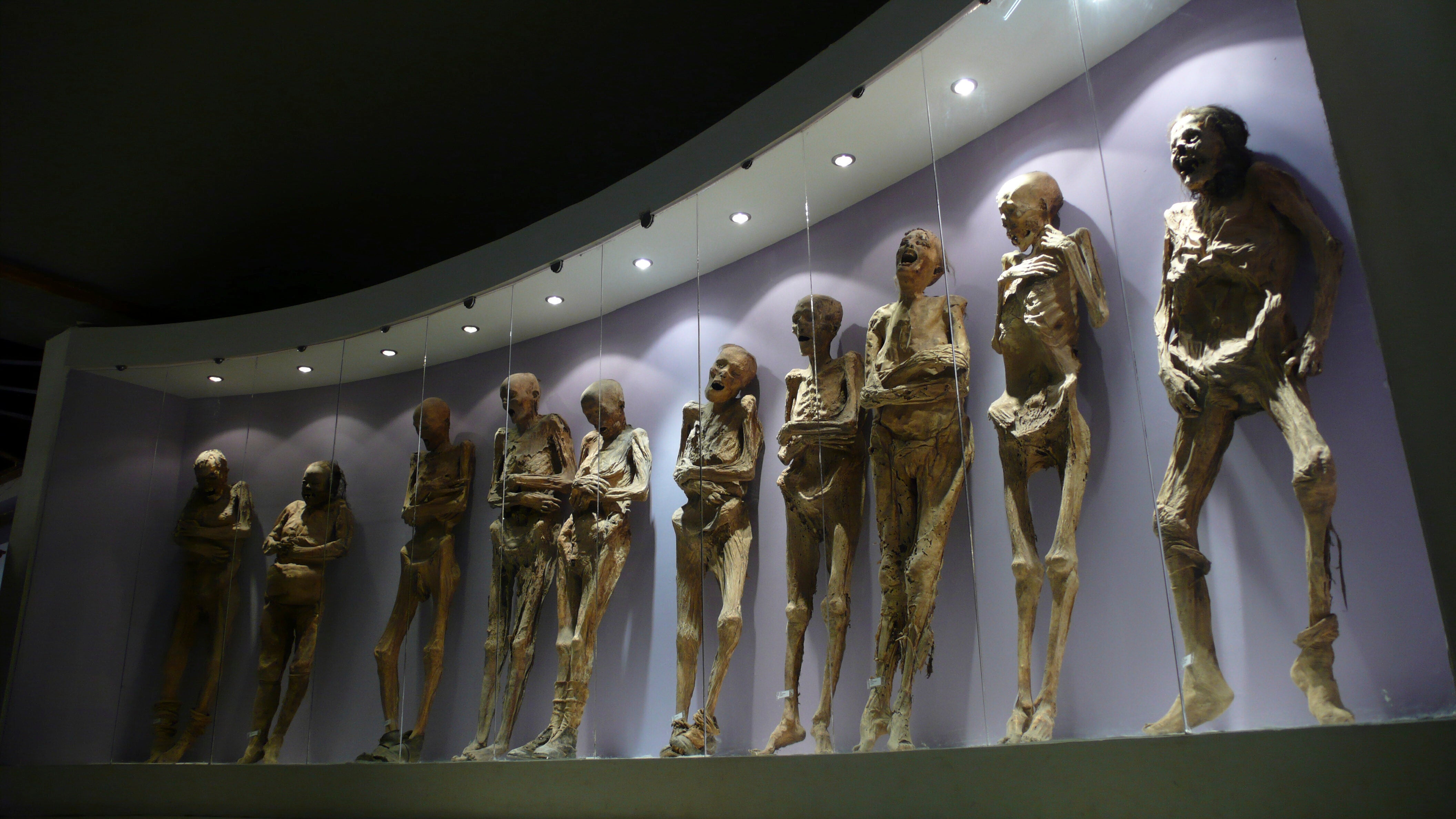Bungling Guanajuato museum staff in Mexico accused of mishandling mummies after arm falls off

A row has broken out in Mexico after the arm of a mummy in a museum ‘fell off’.
The country’s federal archaeology agency has accused the city of Guanajuato of mistreating one of the country’s famous mummified 19th century bodies.
The National Institute of Anthropology and History, INAH, said that during recent renovations at the museum where the mummified bodies are on permanent display, the arm of one of the mummies came off.
The corpses were buried around the early 1800s and dug up starting in the 1860s, because their families could no longer pay burial fees. The mummies have been on a grisly display in glass cases in a museum in Guanajuato, the capital of the state of the same name, and toted around to tourism fairs for decades. Some were exhibited in the United States in 2009.
What appears to be at the root of the latest dispute is a turf battle between the INAH, which believes it has jurisdiction over the mummies because it says they are “national patrimony,” and Guanajuato, which considers them a tourist attraction.
The state is governed by the conservative National Action Party, which the Morena party – which holds power at the federal level – considers its arch enemy.
On Monday, the institute said it would demand an accounting of what permits and procedures were followed during the museum renovations.
“These events confirm that the way the museum’s collection was moved is not the correct one, and that far from applying proper corrective and conservation strategies, the actions carried out resulted in damages, not only to this body,” the institute wrote in a statement.
It did not say what, if any, other bits of mummies had fallen off.

“It appears that this situation is related to a lack of knowledge about proper protocols and the lack of training of the personnel in charge of carrying out these tasks,” it continued.
The preserved corpses were unintentionally mummified when they were buried in crypts in a dry, mineral-rich soil environment in the mining state of Guanajuato. Some still have hair, leathery skin and their original clothing.
The institute appeared to be frustrated because personnel in Guanajuato, not the institute’s own staff, is in charge of the approximately 100 mummies. In part because they were mostly dug up before the institute was founded in 1939, they remain under state control, something that has rankled federal officials in the past.
In 2023, experts from the institute complained that a traveling display of mummies could pose a health risk to the public, because one of the mummies appeared to have fungal growths.
At the time the federal institute distanced itself from a state government decision to display six of the mummies in glass cases at a tourism fair in Mexico City. It is unclear if the cases are air-tight and the institute said it has not been consulted about the display.
“It is even more worrisome that they are still being exhibited without the safeguards for the public against biohazards,” the institute said.
“From some of the published photos, at least one of the corpses on display, which was inspected by the institute in November 2021, shows signs of a proliferation of possible fungus colonies.
“This should all be carefully studied to see if these are signs of a risk for the cultural legacy, as well as for those who handle them and come to see them.”
It is not the first time that the arm of a long-dead person – or his leg – have become a national political issue.
In 1989, the Mexican government weathered a wave of criticism after it removed the arm of revolutionary Gen. Álvaro Obregón – severed in battle in 1915 – after being displayed in a jar of formaldehyde in a marble monument for a half-century. Visitors said it had become ‘unsightly,’ and so the arm was incinerated and buried.
In 1838, Antonio López de Santa Anna, who served as president of Mexico 11 times, lost his leg in battle, and had it buried with honors. By 1844, an angry crowd that accused him of treason dragged the leg through the streets of Mexico City and apparently destroyed it.





